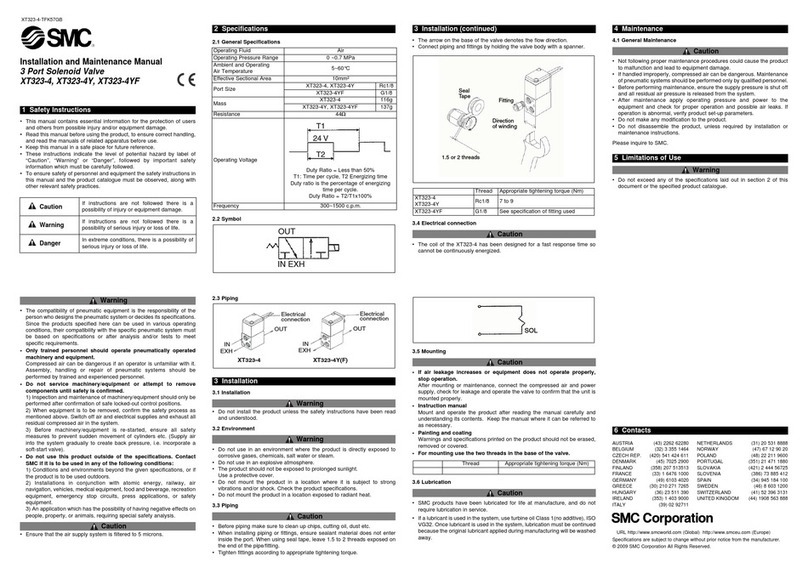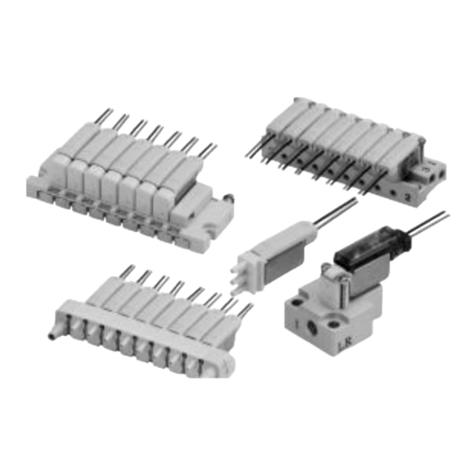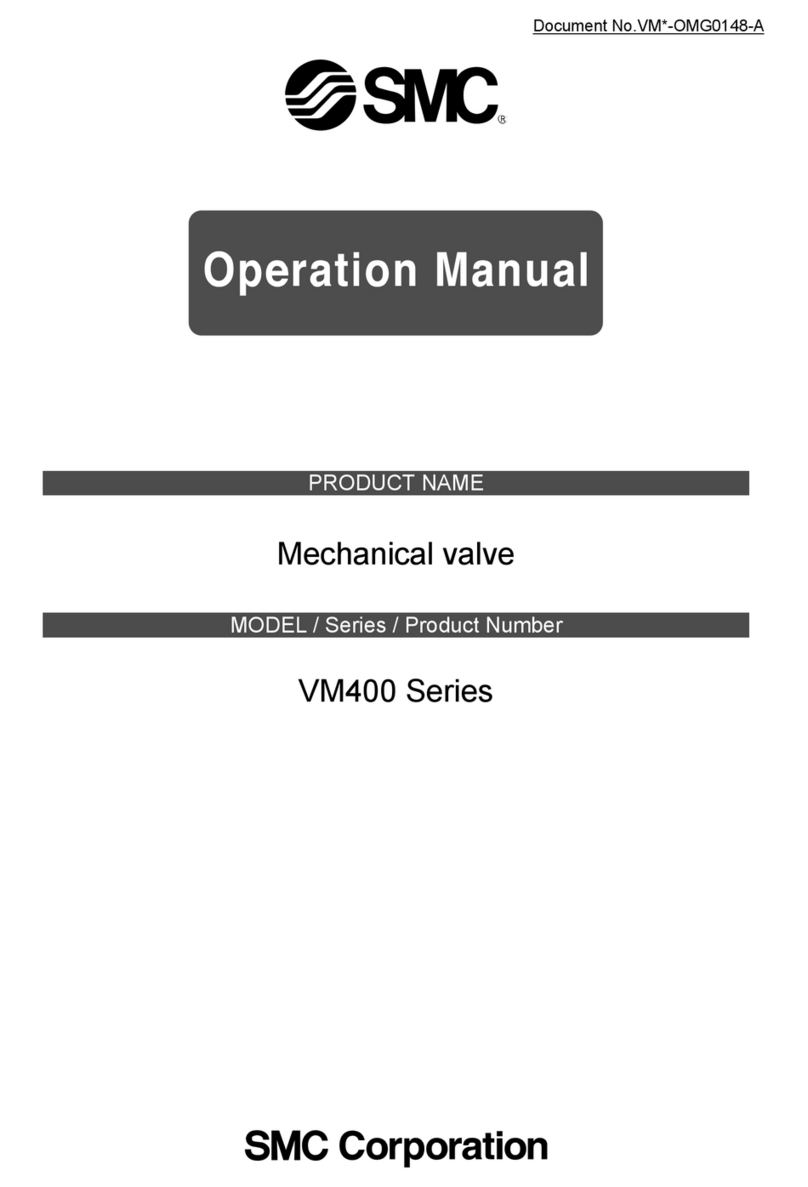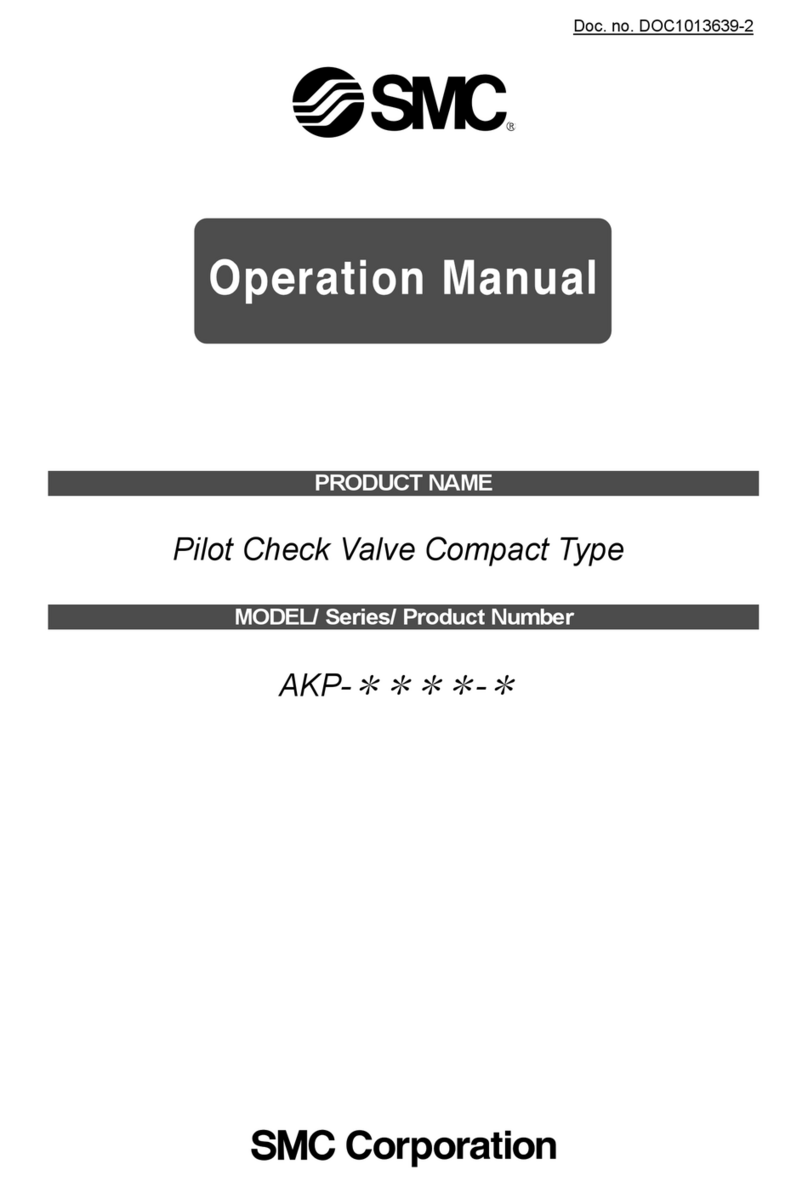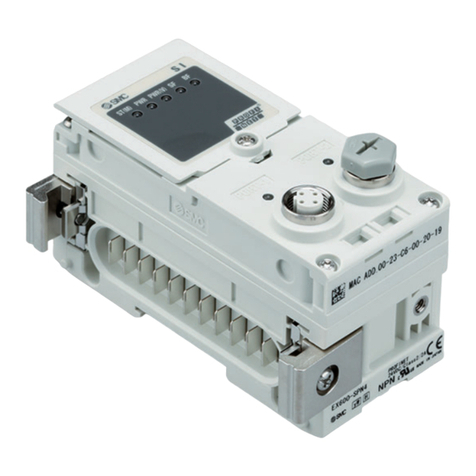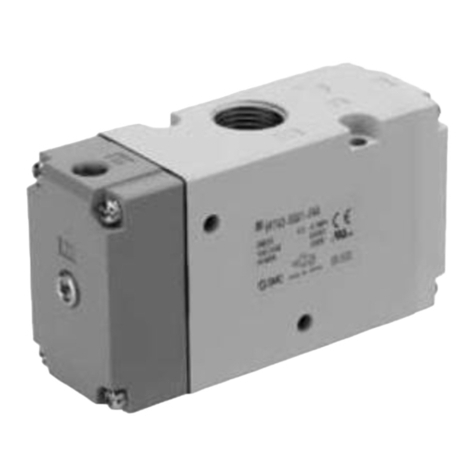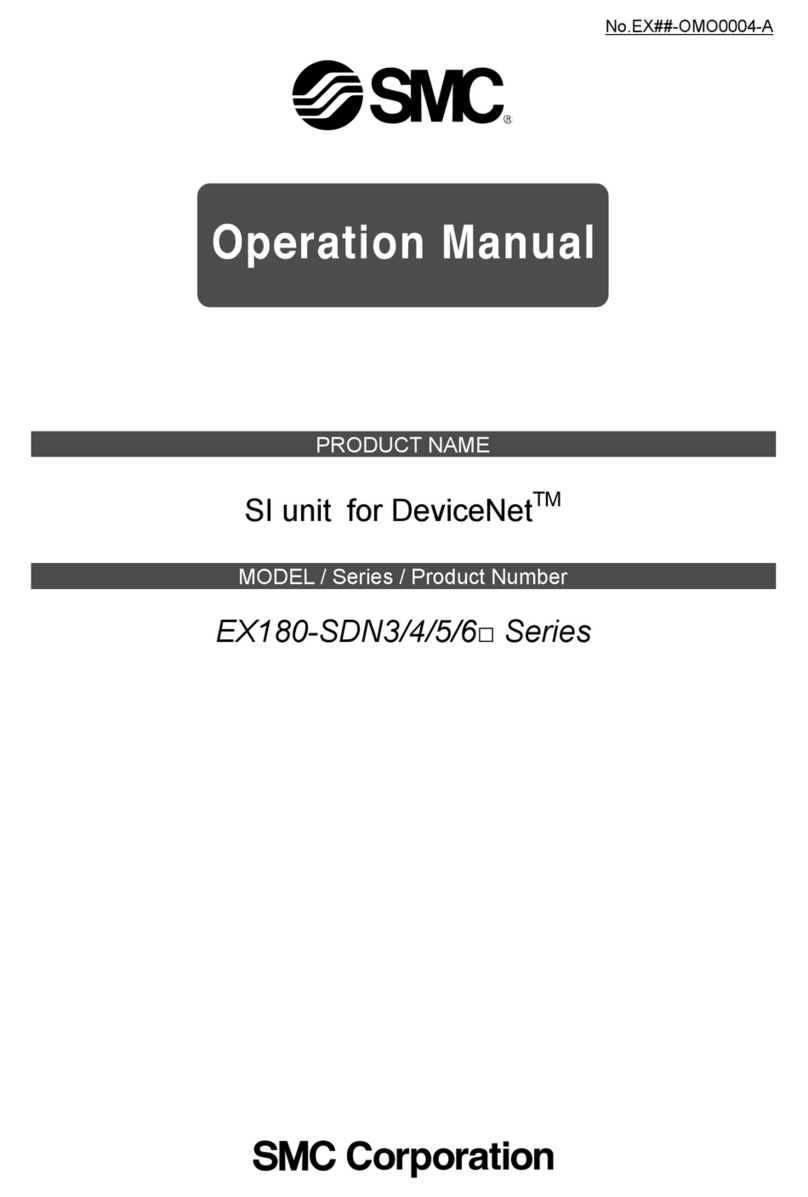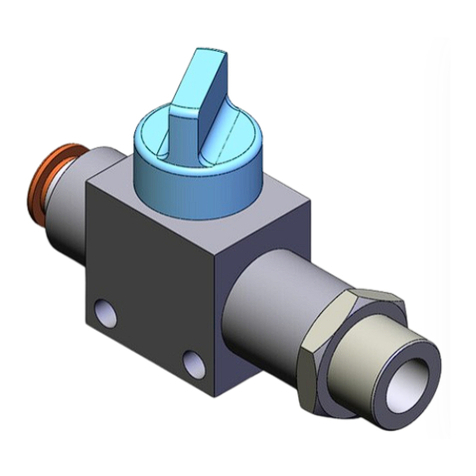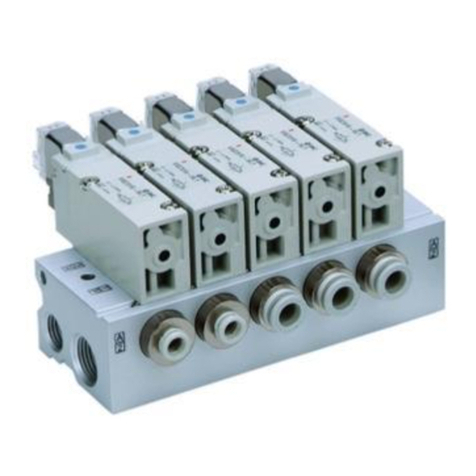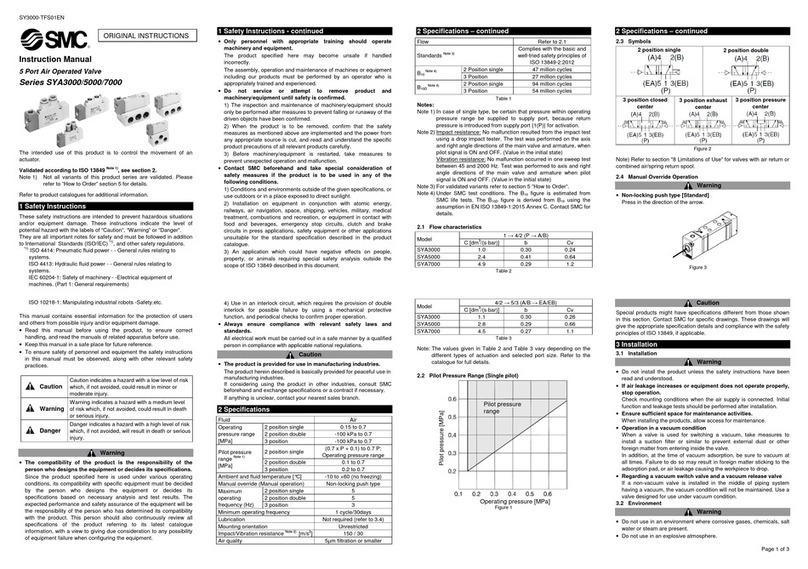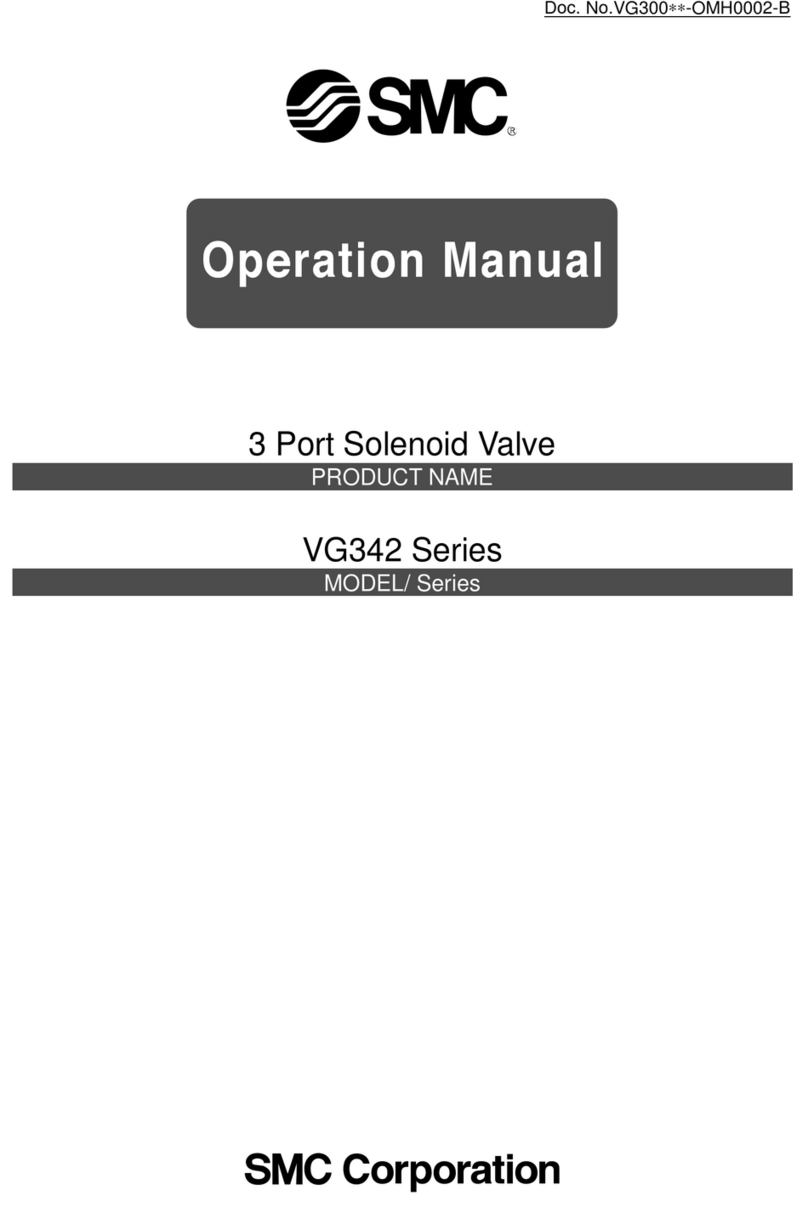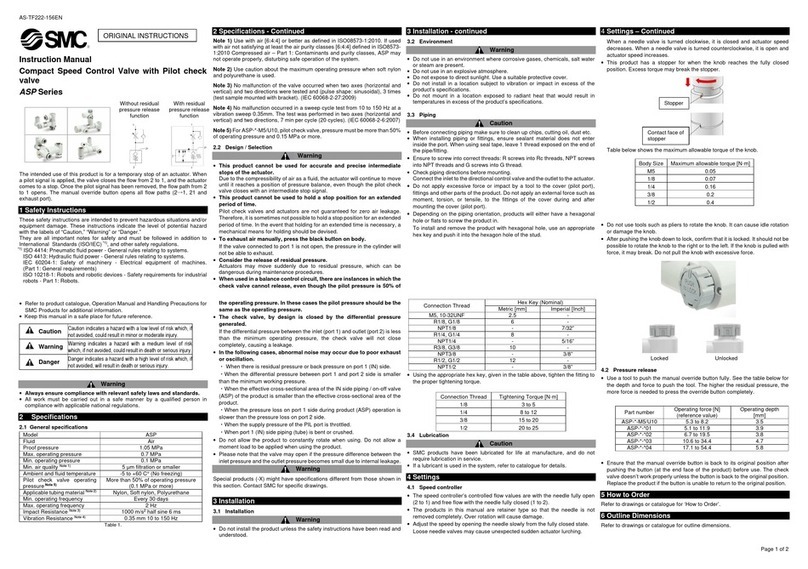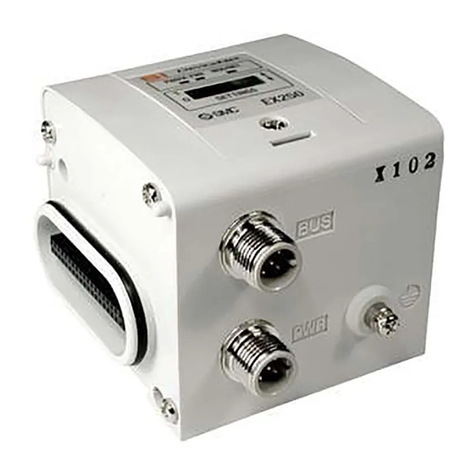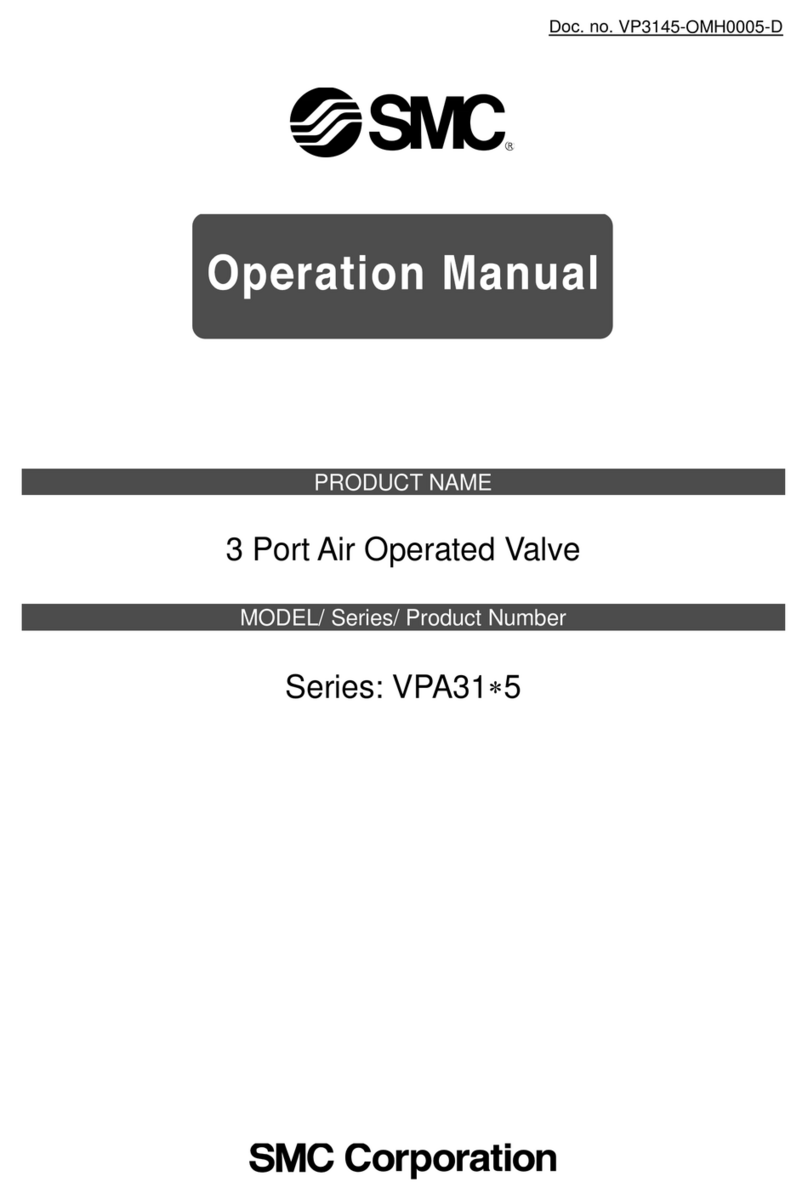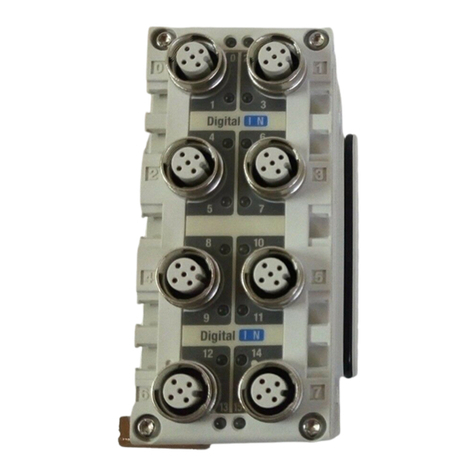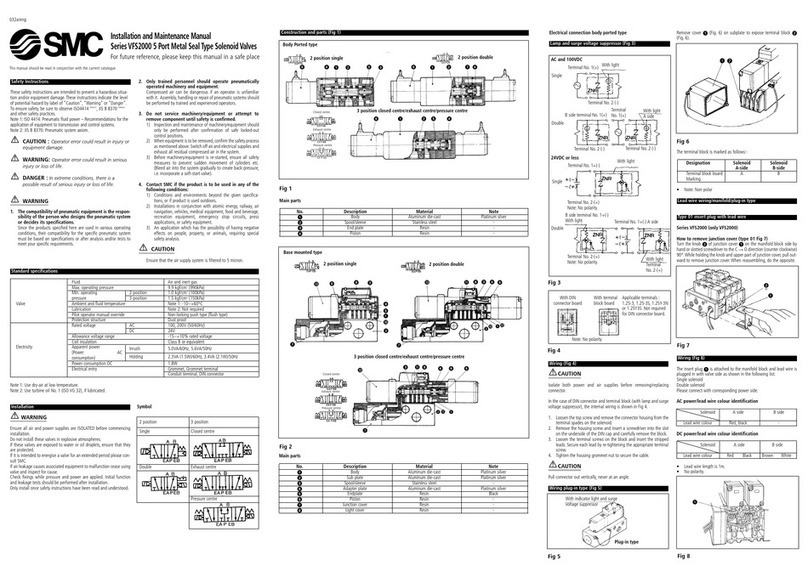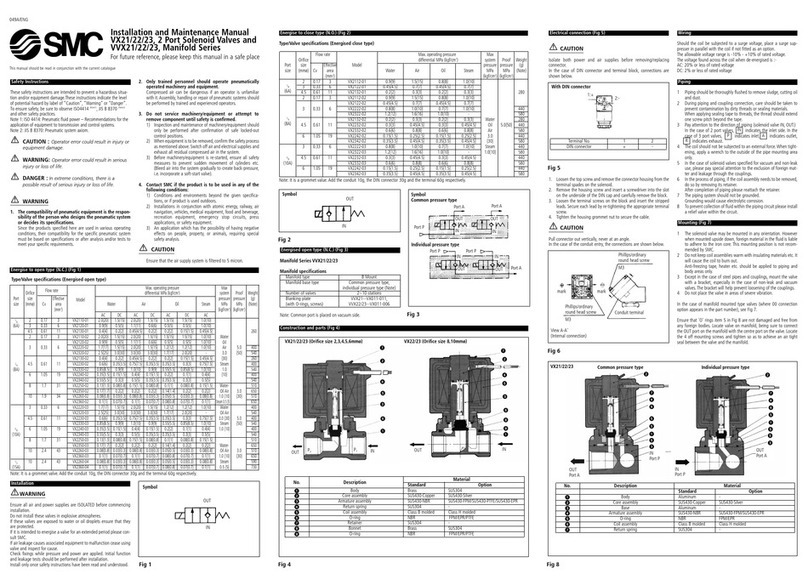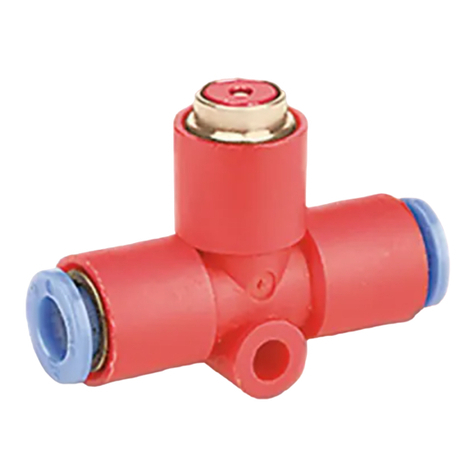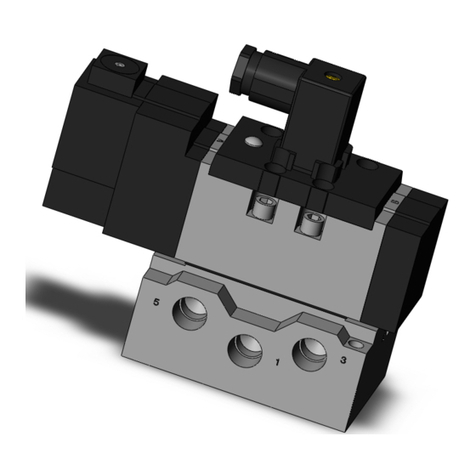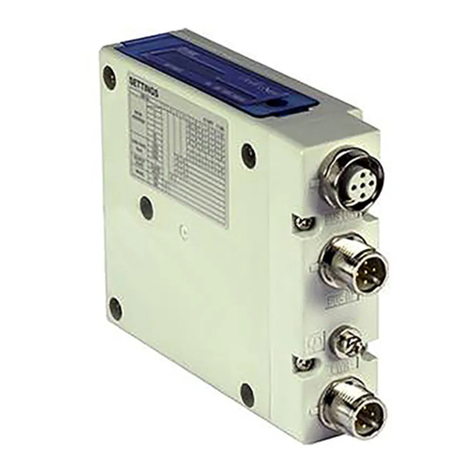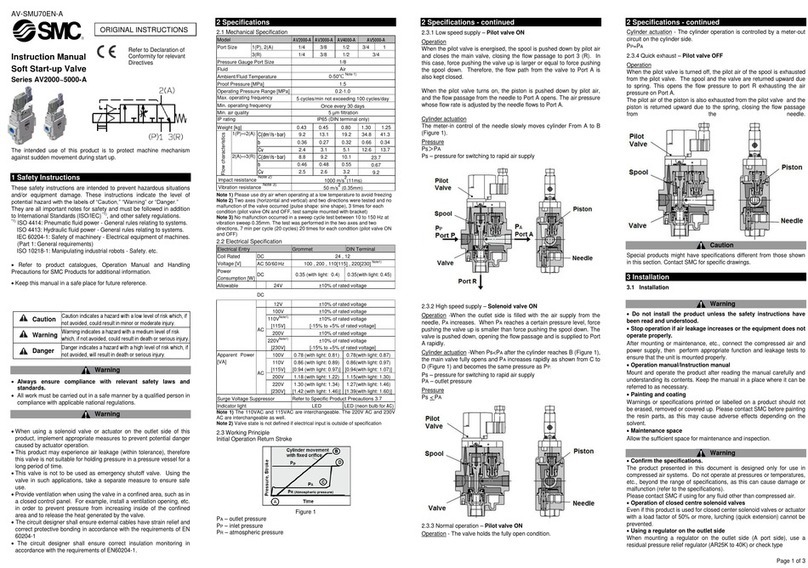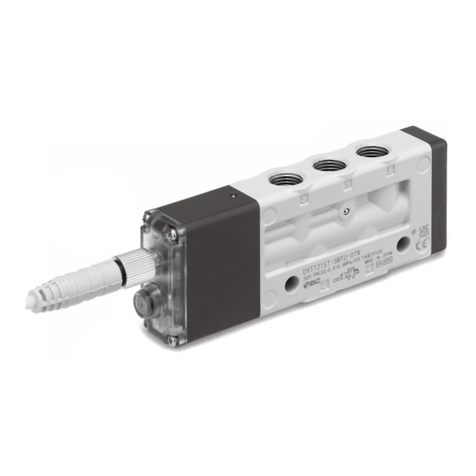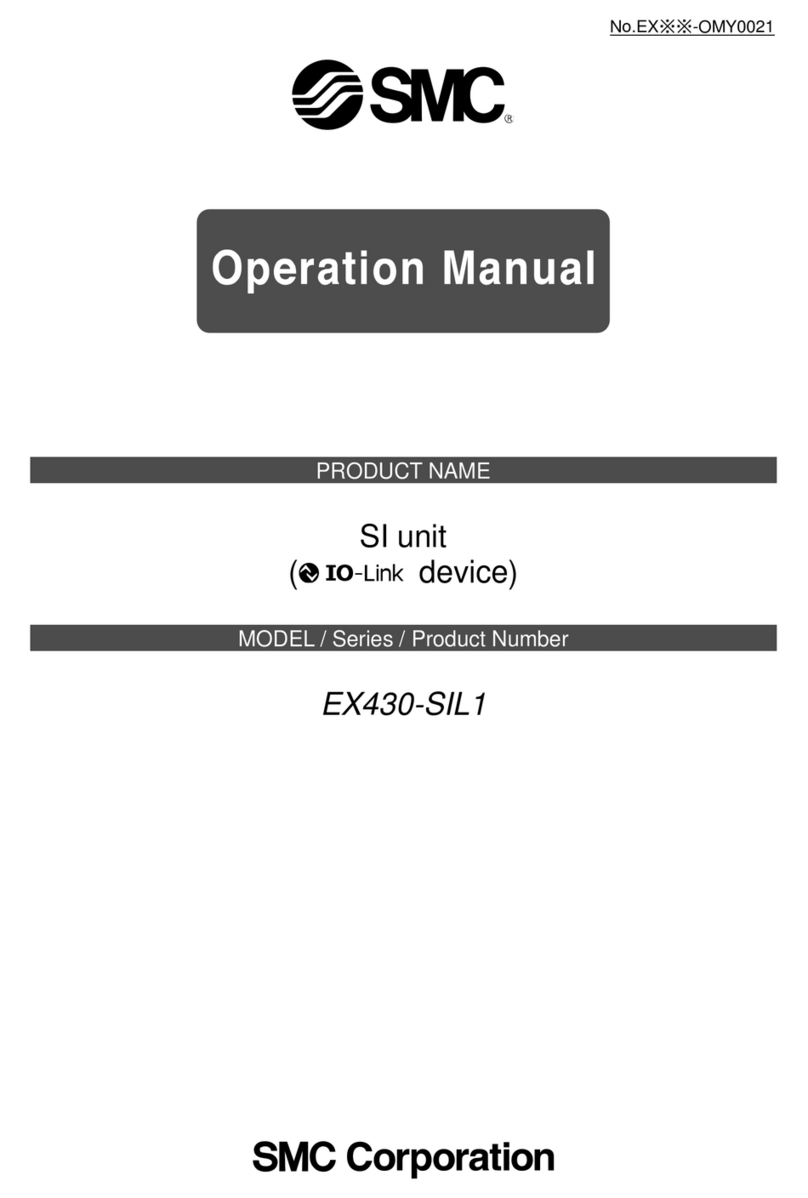
1. Confirm the specifications
This product is designed only for use in compressed air
systems (including vacuum).
Do not operate at pressures or temperatures, etc., beyond the
range of specifications, as this can cause damage or
malfunction. (Refer to the specifications.)
Please contact SMC when using a fluid other than compressed
air (including vacuum).
We do not guarantee against any damage if the product is
used outside of the specification range.
2. Actuator drive
When an actuator, such as a cylinder, is to be driven using a
valve, take appropriate measures (such as the installation of a
cover or the restricting of access to the product) to prevent
potential danger caused by actuator operation.
3. Effect of back pressure when using a manifold
Use caution when valves are used on a manifold because
actuators may malfunction due to back pressure.
Caution is necessary especially when a single acting cylinder
is operated. When there is a danger of such a malfunction,
take countermeasures such as using an individual EXH
manifold.
4. Holding pressure (including vacuum)
Since valves are subject to air leakage, they cannot be use dfor
applications such as holding pressure (including vacuum) in a
pressure vessel.
5. Not suitable for use as an emergency shutoff
valve, etc.
VK series are not designed for safety applications such as an
emergency shutoff valve. If the valves are used for the
mentioned applications, additional safety measures should be
adopted.
6. Release of residual pressure
For maintenance and inspection purposes install a system for
releasing residual pressure.
7. Operation in a vacuum condition
When a valve is used for switching a vacuum, take measures
to install a suction filter or similar to prevent external dust or
other foreign matter from entering inside the valve.
In addition, at the time of vacuum adsorption, be sure to supply
a constant supply of vacuum. Failure to do so may result in
foreign matter sticking to the adsorption pad or air leakage,
causing the workpiece to drop.
8. Regarding a vacuum switch valve and a
vacuum release valve
If a non-vacuum valve is installed in the middle of a piping
system that contains a vacuum, the vacuum condition will not
be maintained. Use a valve designed for use under vacuum
conditions.
9. Ventilation
Provide ventilation when using a valve in a confined area, such
as in a closed control panel. For example, install a ventilation
opening, etc. in order to prevent pressure from increasing
inside of the confined area and to release the heat generated
by the valve.
10. Extended periods of continuous energization
・If a valve will be continuously energized for an extended
period of time, the temperature of the valve will increase due to
the heat generated by the coil assembly. This will likely
adversely affect the performance of the valve and any nearby
peripheral equipment. Therefore, when the total energizing
time per day is expected to be longer than the total
de-energizing time per day, use a continuous duty type valve.
Depending on the operating conditions, it may be possible to
use valves which are not mentioned above. Please contact
SMC. In addition, it is possible to shorten the energizing time
by using a N.O. (normal open) valve.
・When the valve is mounted onto a control panel, incorporate
measures to limit the heat radiation so that it is within the
operating temperature range. Do not touch the valves by bare
hand during or after energization.
For example, the temperature will be high when a 3 station
manifold or larger is put next to other valves and continuously
energised.
11. Do not disassemble the product or make any
modifications, including additional machining.
Doing so may cause human injury and/or an accident.
1. Leakage voltage
Take note that the leakage voltage will increase when a
resistor is used in parallel with a switching element or when a
C-R circuit (surge voltage suppressor) is used for protecting a
switching device because of the leakage voltage passing
through the C-R circuit. The suppressor residual leakage
voltage should be as follows.
DC coil 2% or less of rated voltage
AC coil 20% or less of rated voltage
2. Solenoid valve drive for AC with solid state
output (SSR, TRIAC output, etc.)
1) Current leakage
When using a snubber circuit (C-R element) for surge
protection of the output, a very small amount of electrical
current will continue to flow even during the OFF state. This
results in the valve not returning. In the a situation where the
tolerance is exceeded, as in the above case, take measures
to install a bleeder resistor.
2) Minimum allowable load amount (Min. load current)
When the consumption current of a valve is less than the
output’s minimum allowable load volume or the margin is small,
the output may not switch normally. Please contact SMC.
3. Surge voltage suppressor
1) The surge voltage suppressor built into the valve is intended to
protect the output contacts so that the surge generated inside
valve does not adversely affect the output contacts. Therefore,
if an overvoltage or overcurrent is received from an external
peripheral device, the surge voltage protection element inside
the valve is overloaded, causing the element to break. In the
worst case, the breakage causes the electric circuit to enter
short-circuit status. If energizing continues while in this state, a
large current flows. This may cause secondary damage to the
output circuit, external peripheral device, or valve, and may
also cause a fire. So, take appropriate protective measures,
such as the installation of an overcurrent protection circuit in
the power supply or a drive circuit to maintain a sufficient level
of safety.
VK300/3000 Series
Precautions for 3/5 Port Solenoid Valve 1
Be sure to read before handling.
- 4 -
VK300**-OMH0002-C
